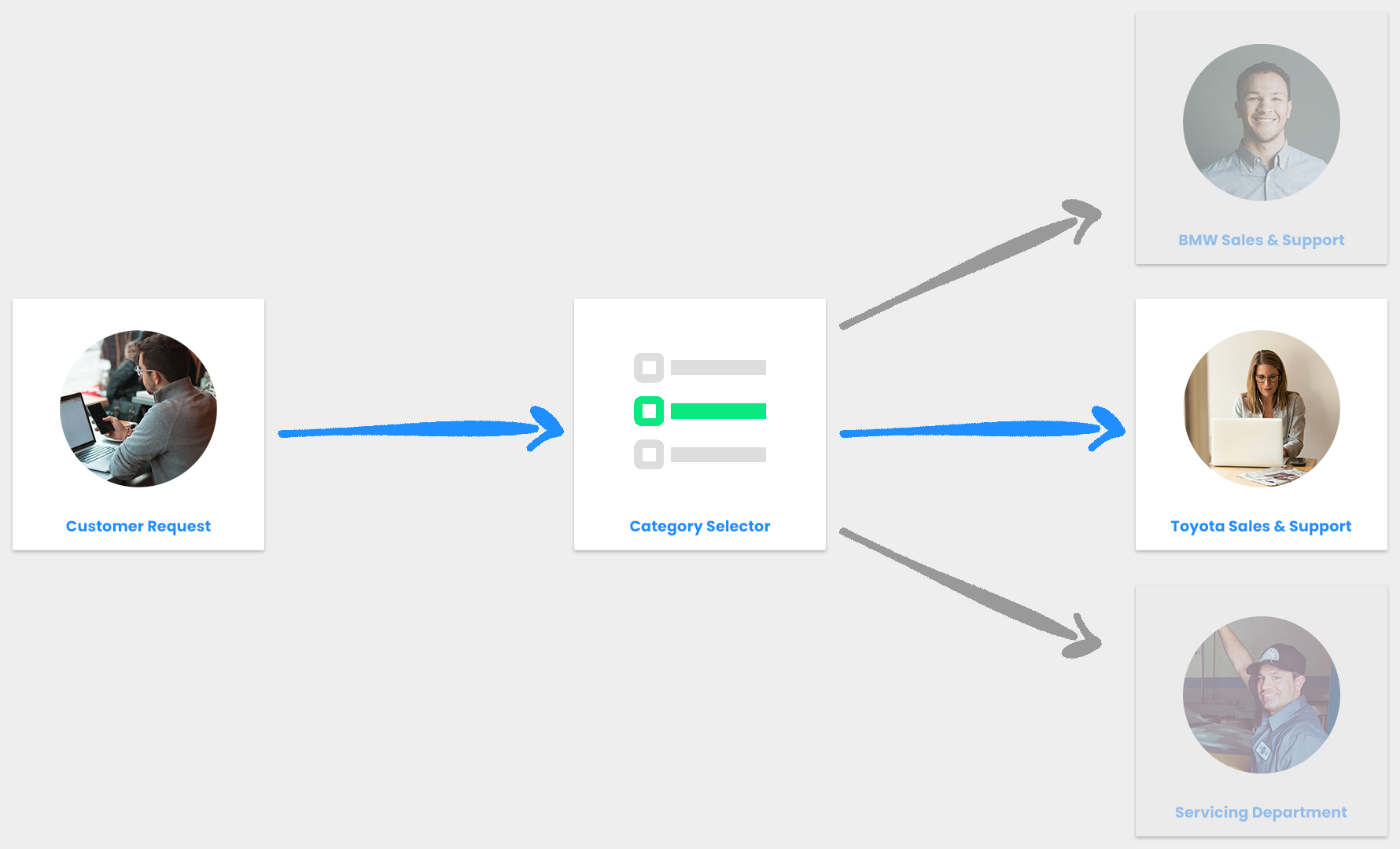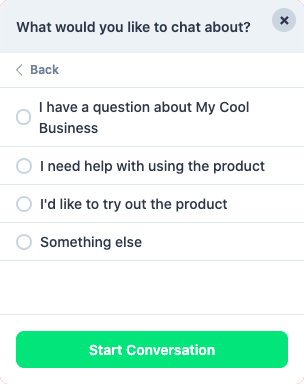An Introduction to Categories
Categories are the way that Ralli ensures that your customers are talking to the right person in the business for their type of query from the get-go. In the mind-set of the Ralli platform, categories are the talking points of a conversation - the ice-breaker question (or conversation starter) that helps you figure out what a customer is actually after. You can be as open- or closed- ended on your categories as you like, complementing your business' preferred sales/support strategy.
Simply put: you create categories, we present these to the user as they start a conversation, and we let your business users who are assigned to look after those categories when a new conversation is started about them.

This form of pre-triage helps reduce the need for a specific "support person"/"social media expert" in your business. It also allows you to fully manage your support and sales leads without the need for someone (either within your business, or externally) collecting a customer's details just for you to have to do it all again when they pass it on to you.
It also ensures that your staff can get on with their day-to-day jobs, and not have to constantly manage a shared inbox and checking in periodically - they're only notified if there's something for them to actually do on the platform.
Designing Categories
Each of your Messaging Channels (messages coming through social media, or your own website) has its own set of categories, allowing you to customise the experience depending on where your customers are coming from (i.e. you may want to have a different experience for your Facebook customers than you do on your website).
Categories can be as broad as specific as you like (we don't do any special processing or reasoning about them behind the scenes). On Ralli we've designed our categories to ask an open ended question about what we can help you with - favouring more of a "support" experience (that leads to a sales one). You may find that just presenting a brand or specific talking point works better for your business case.
Say, for example, you are a car dealership selling BMW cars. You may want to have your categories as:
- New BMW enquiry
- Used BMW enquiry
- BMW service
- BMW parts
In this example, you would push users immediately to the person in the business most suited to deal with those specific categories - and leave room for a more open-ended requirement such as Servicing. If you think about a literal "conversation" (in the real world) this is a very direct talking topic - getting to the point quickly.
Alternatively, you can go down the more open-ended route. Take Ralli's own categories:

In this case, we are using more open-ended conversation-starters. It isn't possible for us to fully quantify every single thing someone may want to talk to us about (although we're always looking to help them in a sales capacity... ), and so leaving it more open-ended allows our customers to be broad in how they approach this.
The Decision Process
Obviously, this is up to you and how it fits your business best. If you can categorise specifically it will certainly helps narrowing down on a customer's needs and getting to the point quickly. However, if you don't have that luxury, consider leaving these more open-ended and having more staff per category to deal with these broader queries.
As per usual, we don't charge anything extra for changing your mind at any-time. The decision is reversible, so you can safely play with what works best for your business. If you're still scratching your head, reach out to us and we can help you through the process .
Creating Your Categories
When you're ready, read our article on creating and managing your categories to get your categories setup and working for your business.